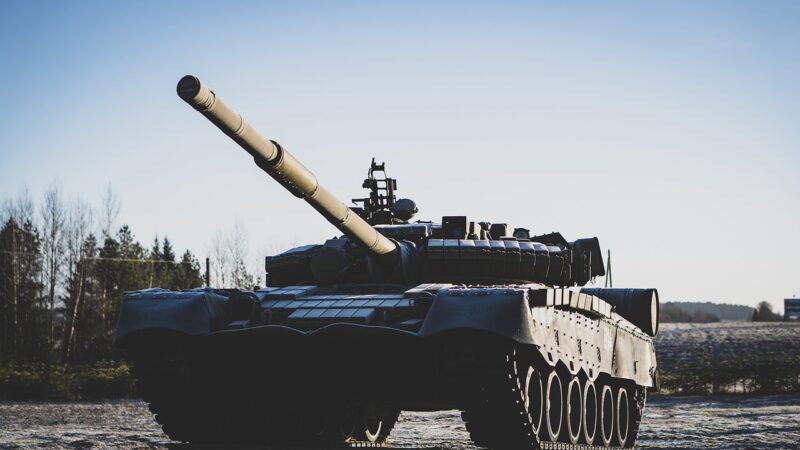How Armored Vehicles Have Transformed Warfare Tics on the Ground
November 16, 2024

Armored vehicles have played a crucial role in modern warfare, revolutionizing the tactics and strategies used on the battlefield. From the muddy trenches of World War I to the high-tech battlefields of the 21st century, these machines have enhanced the capabilities of ground forces and reshaped military doctrine. In this detailed exploration, we’ll delve into the evolution of armored vehicles, their impact on warfare tactics, and their role in shaping contemporary military operations.
1. The Birth of Armored Warfare
The concept of armored vehicles emerged during World War I when the need for a platform that could withstand enemy fire and traverse difficult terrain became evident. The early designs, such as the British Mark I tank, were primarily used to break the stalemate of trench warfare. These rudimentary tanks, although slow and mechanically unreliable, introduced a new dynamic to the battlefield.
The introduction of armor allowed forces to bypass barbed wire and machine gun nests, enabling them to advance closer to enemy lines. This innovation laid the groundwork for the development of more sophisticated armored vehicles in the years that followed.
2. The Interwar Period: Innovation and Development
Between the two world wars, nations recognized the potential of armored vehicles and began to innovate. Countries like Germany, the Soviet Union, and the United States invested heavily in armored technology, leading to the design of more effective tanks, armored personnel carriers (APCs), and self-propelled artillery.
The German Blitzkrieg tactics exemplified the integration of armor into military strategies. By combining tanks with infantry and air support, Germany executed rapid, coordinated assaults that overwhelmed enemy defenses. This doctrine demonstrated the effectiveness of mobility, speed, and the concentrated use of armored units.
3. World War II: Armored Warfare’s Golden Age
World War II witnessed the rise of armored warfare as a dominant force on the battlefield. Tanks underwent significant advancements, becoming faster, more powerful, and better protected. Notable tanks such as the German Tiger I and the Soviet T-34 demonstrated the importance of firepower, mobility, and protection in armored design.
The war also saw the development of new tactics. Large formations of tanks, known as “armored columns,” could penetrate enemy lines and disrupt supply routes. The liberation of France and the movements across North Africa showcased the power of armored divisions and the need for combined arms operations.
4. Cold War Era: The Evolution of Armored Forces
After World War II, the arms race between superpowers influenced the development of armored vehicles. Cold War tensions prompted the creation of advanced tanks like the American M1 Abrams and the Soviet T-72. These vehicles incorporated cutting-edge technology, such as composite armor, advanced targeting systems, and enhanced mobility.
The Cold War also saw the introduction of new tactics. Armored forces learned to operate in various terrains, adapting to different environments from the forests of Europe to the deserts of the Middle East. The potential for nuclear war caused military leaders to rethink the role of armor in warfare, emphasizing the importance of flexibility and adaptability.
5. Transformations in Modern Warfare
The 21st century has brought about new challenges and technological advancements that have further transformed armored warfare. The advent of asymmetric warfare, characterized by non-state actors and insurgencies, has required a shift in tactics. Armored vehicles have had to adapt to urban combat scenarios, where traditional tactics may not apply.
Moreover, the integration of technology like unmanned vehicles, remote-controlled systems, and cybersecurity has reshaped the battlefield. Modern armored units must incorporate intelligence, surveillance, and reconnaissance (ISR) capabilities to maintain situational awareness and enhance decision-making processes on the ground.
6. The Future of Armored Warfare
Looking ahead, armored warfare will continue to evolve as technology advances. Future trends include:
- Increased Automation: Autonomous armored vehicles and robotics may reduce the risk to personnel and enhance operational effectiveness.
- Network-Centric Warfare: Enhanced communication systems will allow armored units to share data in real-time, improving coordination with other military branches.
- Hybrid Warfare Strategies: The combination of conventional and unconventional warfare will require armored forces to be versatile and adaptable in diverse combat environments.
The ongoing advancements will redefine how armored forces are utilized, impacting strategies and military doctrines worldwide.
Conclusion
Armored vehicles have significantly transformed ground warfare tactics over the years. From their initial use in World War I to their contemporary roles in complex combat scenarios, these machines have redefined military strategies and operations. As technology continues to advance, the evolution of armored vehicles will undoubtedly shape the future of warfare, presenting new challenges and opportunities in the global security landscape. Armored units will remain vital to achieving success on the battlefield, adapting to the ever-changing dynamics of warfare while preserving their fundamental role in military operations.







